FigJam's wild freemium strategy
Why FigJam is a big deal, plus a few recent content recommendations.
SaaS Pricing is hard. PricingSaaS is your cheat code.
Monitor competitors, track real-time benchmarks, discover new strategies, and more.
Hey y’all,
Hope this finds you well!
I’m trying something new this week and including some recent recommendations after the main post. If you have zero interest in Figma and what they’re doing with FigJam, I recommend jumping straight there!
As always, I’d love your feedback (good and bad).
On to this week’s post…
FigJam Field Notes
If you missed it, Figma held their annual design conference, Config in late April, and made some juicy product announcements…
The two announcements that have gotten the most hype are:
The introduction of FigJam, an online whiteboarding tool.
The release of in-app Audio, which lets users seamlessly chat with colleagues without needing to open another collaboration app.
While in-app audio might have a bigger impact long-term, today I want to focus on FigJam, because I think it's one of the best SaaS product releases in recent memory. That might sound hyperbolic, but every time I think about it, I find something new to love, so before this post turns into more of a bloated loveletter than it already is, I wanted to jot down some thoughts on why I find it so impressive.
First, you may be wondering what FigJam is…
FigJam is an online whiteboard platform. In the context of Figma (a collaborative design platform), FigJam serves users earlier in the design process by giving them a place to brainstorm and ideate before actually collaborating on design assets.
If that sounds familiar, it should!
In recent posts, I've written extensively about Miro, and FigJam is a very similar offering. If you remember back to Okta's Business at Work report, Miro landed just ahead of Figma in the Fastest Growing Apps category.
With FigJam, Figma is taking dead aim at a market that's growing rapidly and aligns perfectly with their goal of growing the importance of visual communication beyond designers. Specifically, I’m most impressed with three elements of FigJam:
Product Advantages
Alignment with Figma’s Core Mission
Pricing and Packaging Strategy
Let’s unpack each, starting with the product.
FigJam’s Product Advantages
From a product standpoint, FigJam has two primary advantages over Miro:
Multi-player is built into Figma’s DNA
FigJam is designed to be fun and simple above all else.
Figma's secret sauce lies in the way they've envisioned multi-player collaboration. In his piece, Why Figma Wins, Kevin Kwok writes about how being browser-first gave Figma a multi-player orientation from the jump.
Designs in Figma are not just stored in the cloud; they are edited in the cloud, too. This means that Figma users are always working on the same design. With Dropbox, this isn’t true. The files may be stored in the cloud, but the editing happens locally—imagine the difference between sharing Word files in Dropbox vs. editing in Google Docs.
David Pierce at Protocol expands on this Google Docs comparison and contends that multi-player, not design, is Figma's core feature.
Figma built a browser-based, inherently collaborative tool for interface design, like Google Docs for designers. And then, unlike Google Docs, Figma spent years improving on the idea.
This focus on the multi-player experience has resulted in an app that truly feels like a shared digital space, and this same multi-player muscle is built into FigJam.
Users can watch each other's cursors move around the page, share live updates in a text box that pops up next to their cursor, and react to updates with emojis, stamps, and other visual assets.
These features make FigJam seem like a fun product to use, and the Figma team has put that on full display. If you visit the FigJam landing page, you'll notice your cursor turns into a marker, allowing you to get a feel for the tool before even signing up.
While this is a little thing, it's a playful touch that helps imbue the FigJam product with a sense of fun, something the team clearly had in mind when they named the product FigJam in the first place.
Fun may not seem like a killer feature on the surface, but Figma's approach with FigJam reminds me of Slack's approach to work-chat. Part of the reason Slack crushed HipChat is because they focused on making the app fun to use.
Furthering Figma’s Mission
Within the Figma product, there are two primary types of users: Editors and Viewers. Designers are typically Editors, and non-design collaborators usually start out as Viewers. In his interview on Invest Like the Best, Figma CEO Dylan Field says that converting Viewers into Editors is one sign that Figma is growing the importance of design beyond designers. That said, this goal comes with inherent friction. Since Figma is widely considered a design tool, and charges based on the number of Editors (not Viewers) many customers are likely reluctant to give editing capabilities to non-designers unless it’s absolutely necessary. As a result, the path to converting Viewers to Editors in Figma is a long-term play.
FigJam gives Figma a lever to drive non-designers into their ecosystem much faster.
While FigJam shares an emphasis on visual communication, it’s not explicitly a design tool. FigJam does help designers with ideation and brainstorming, but it also serves non-designers who have broader use cases for a digital whiteboard. This is where FigJam will inevitably run into Miro, which supports the following use cases beyond ideation and brainstorming:
Meetings & Workshops
Agile Workflows
Mapping & Diagramming
Research & Design
Strategy & Planning
Concept Mapping
Mind Mapping
Online Sticky Notes
Further, appealing to non-designers directly should have a big impact on monetization.
FigJam’s Patient Pricing Strategy
Figma is rolling out FigJam with a long beta period. Specifically, FigJam is free for all of 2021 and will have plans at $0, $8, and $15 per editor per month starting in 2022.
This could have big implications on the competitive landscape. Basically, Figma is offering a 7-month free trial of FigJam - giving users a long time to get hooked on the product before having to pay for it.
Given how much both platforms have grown recently, I'd imagine Figma and Miro have a decent amount of shared customers, and these folks are the most inclined to move to Figma entirely.
In fact, in his video breaking down FigJam, Design Educator Mizko, speaks to this exact scenario, stating that once FigJam is out of beta and has more features, he will likely move over to FigJam entirely and stop using Miro. Even in beta, while FigJam doesn’t offer all the advanced features of Miro, the core whiteboard functionality is likely good enough for many users.
In 2022, Figma will move to a true multi-product strategy, offering both Figma and FigJam independently. According to the FigJam FAQ, it will be possible to grant Editor privileges in each tool separately, meaning you don’t have to be an Editor in Figma to be an Editor in FigJam. That said, Figma has an advanced PLG (Product Led Growth) motion with an Enterprise Sales team layered on top, and I would expect their sales team to offer incentives to make it cheaper for users to have shared Editor privileges across both products.
Even if customers don’t opt for shared Editor privileges, FigJam will meaningfully expand the surface area of Figma’s deals, boosting ARPA (Average Revenue per Account) and NDR (Net Dollar Retention) as customers upgrade.
Lastly, Enterprise buyers are already conditioned to end-of-year discounts, making Figma’s timing perfect for going paid. With FigJam coming out of beta in January, 2022, I expect the Figma Sales team to lock in some big deals in Q4 to kick things off.
Good, Better, Best (Media Diet Highlights)
Good: Kelly Starrett’s 10-Minute Morning Mobility Routine (video)
I don’t know if it’s something I did or just the compound effect of not stretching enough over 3 decades of activity, but I’ve got some tight hips. I’ve been looking for good stretches to open them up before running, and love this quick sequence from Kelly Starrett. If you’re unfamiliar with Kelly, he’s insanely knowledgeable and not afraid to show it, so for better or worse, you get detailed commentary of exactly what’s happening to your muscles as you’re doing each stretch. All I know is after this 10-minute primer, my entire lower body feels loose and ready to go.
Better: Shiva Baby (movie)
There’s something to be said for short movies. At 77 minutes, Shiva Baby is like a quick little trainwreck that you can’t stop watching. The viewing experience felt similar to Uncut Gems in that the pace and plot instill second-hand anxiety from the get-go, and you can feel the claustrophobia of the setting through the screen. This movie is funny, both cringe-y and laugh-out-loud. Here’s a brief primer:
While at a Jewish funeral service with her parents, a college student has an awkward encounter with her sugar daddy and her ex-girlfriend.
Best: Fortune’s Children: The Fall of the House of Vanderbilt (book)
Where to even start…this is easily one of the most entertaining books I’ve ever read. The story starts with Cornelius Vanderbilt, a frugal tycoon who went by “The Commodore” and amassed an inconceivable fortune building an American railroad empire. The guy was an absurd character. Even reading about his breakfast made me laugh out loud…
After his breakfast of six eggs, a lamb chop, toast, and a cup of tea with twelve lumps of sugar, topped off by a cheekful of Lorillard’s plug, the Commodore spent four or five hours a day at his office, managing the affairs of his railroad empire.
When he died, Vanderbilt was the richest man in America. Fortune’s Children tracks how his heirs threw it all away within 50 years of his death. If you’ve ever seen the mansions in Newport, Rhode Island, and wondered, what the hell was going on here? This book helps paint the picture. The Commodore is just one of many insane characters profiled in these pages - I can’t recommend it enough.
Enjoying Good Better Best?
If you enjoyed this post, I’d love it if you hit the like button up top, so I know which posts are resonating most!




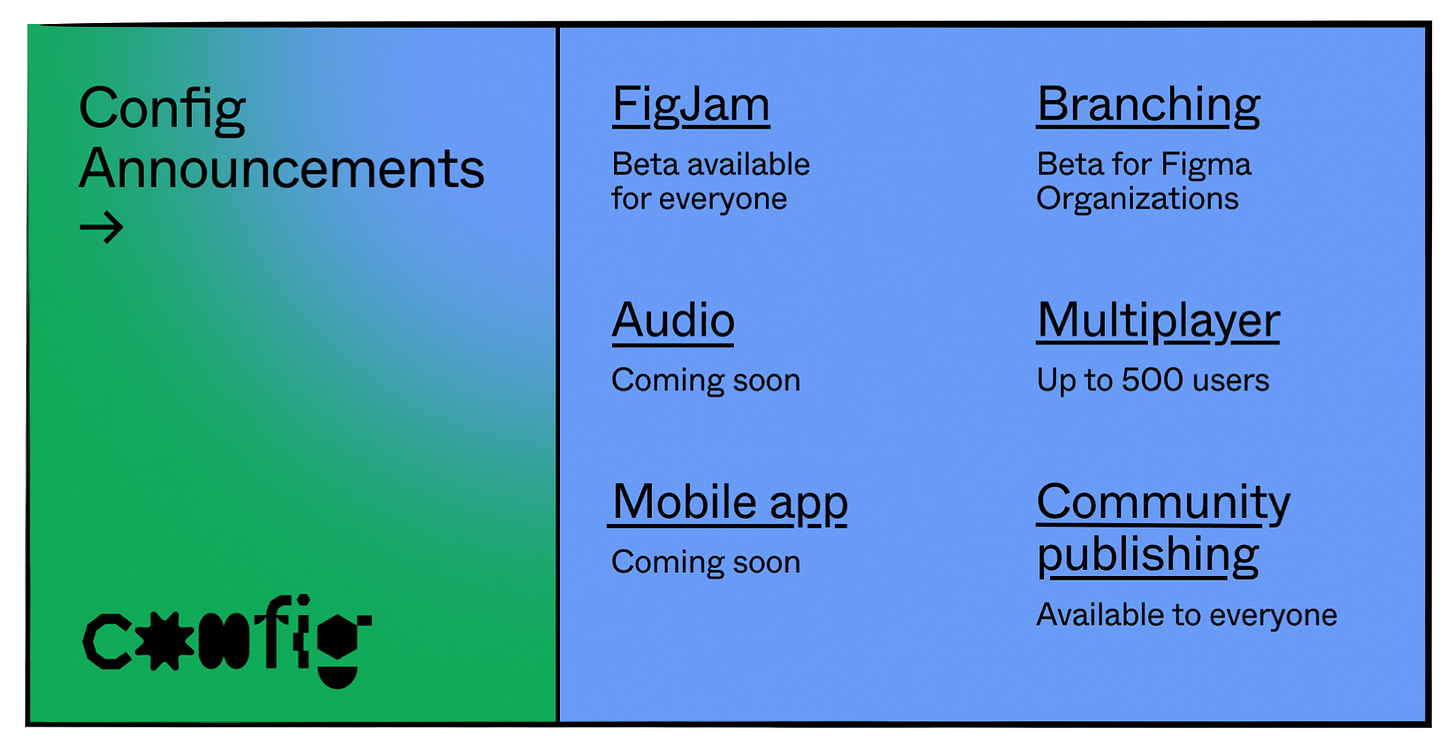

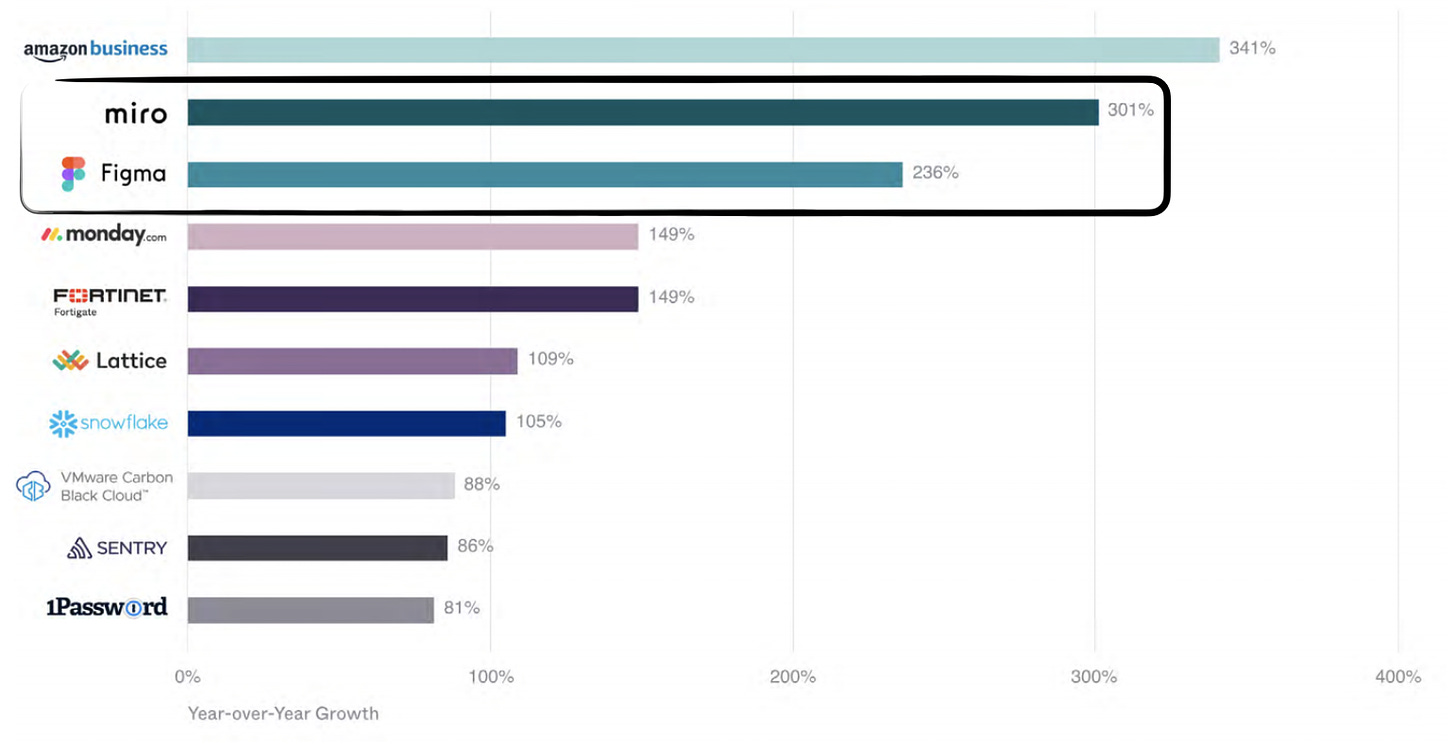
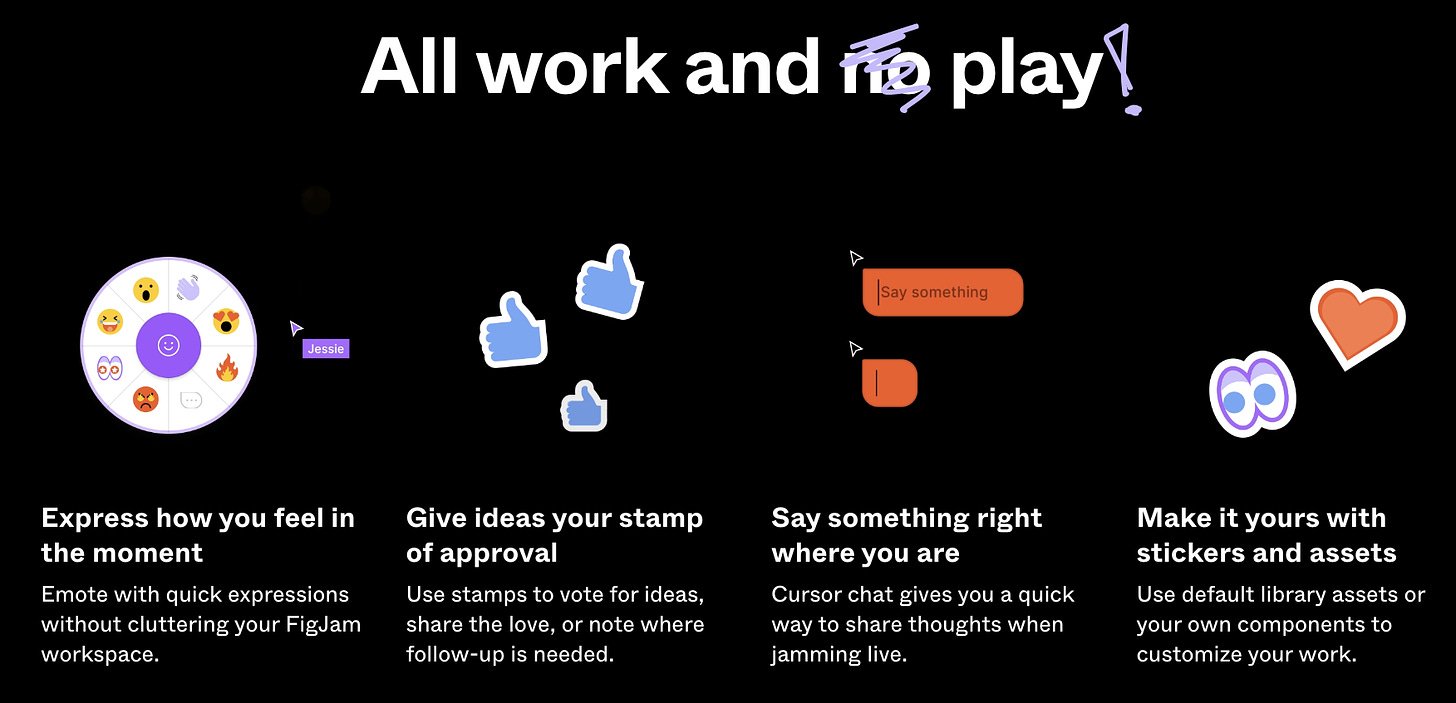
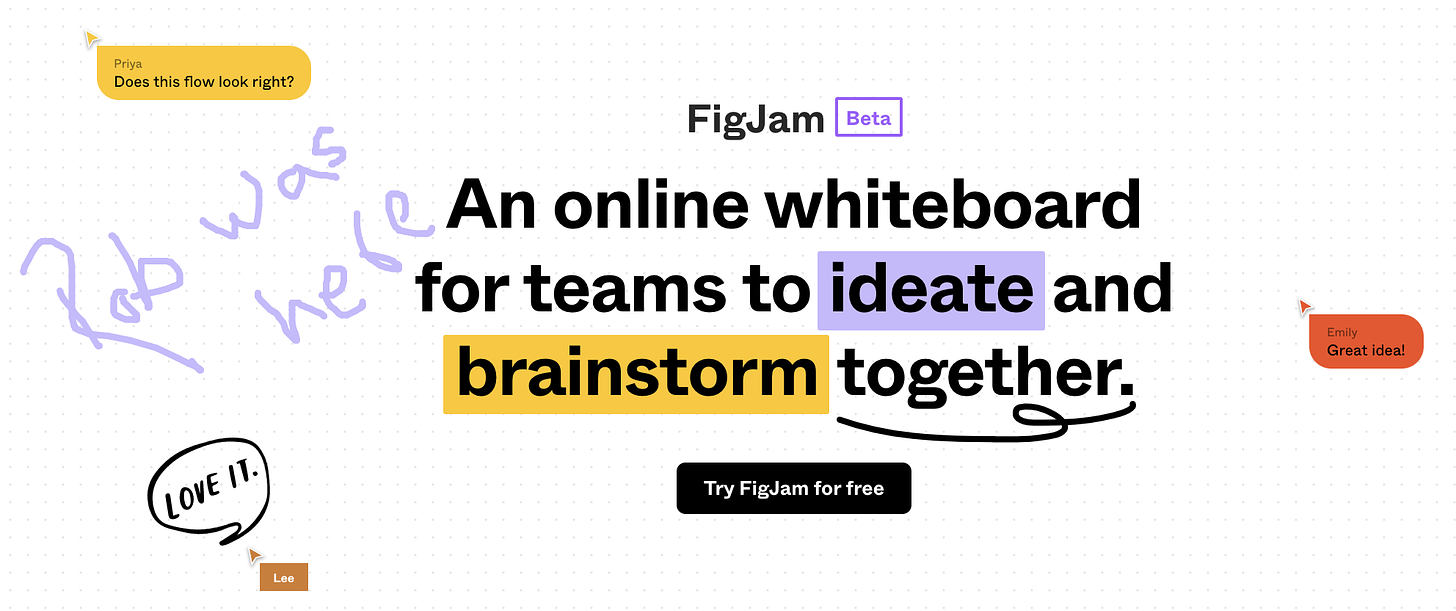

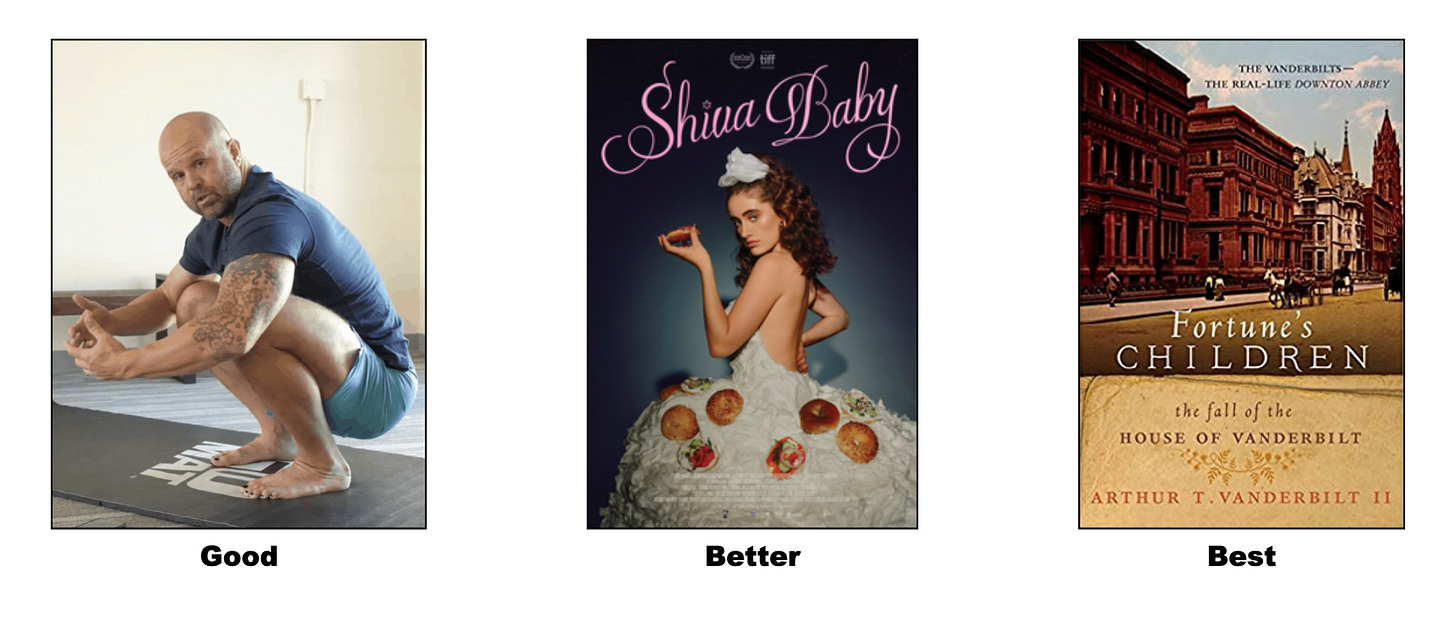
Great post! I love the media diet highlights. I’m going to check them all out.